-
USD
-
UAH
-
EUR
Bu Zhi Chun 300g|Sustainable Package
The top-grade Si Ji Chun, harvested between winter and spring, exudes a rich scent of gardenia flowers.
2873,00 ₴
Get It Today
In stock
Bu Zhi Chun|Flavor Introduction
The name of the tea “Bu Zhi Chun” has a story behind it: Legend has it that there was a scholar named Han Xiutang in ancient China who was extremely passionate about tea. He often read the “Classic of Tea,” composed tea poems, wrote tea essays, and enjoyed drinking mountain tea. One day, he heard that Wuyi Mountain in China was renowned for its beautiful scenery, sweet water, and fragrant tea, so he decided to visit and experience it firsthand. However, when he arrived at Wuyi Mountain, he unfortunately arrived after the Qingming and Grain Rain festivals, which marked the end of the spring tea harvest, leaving him disappointed.
As he walked to a large stone under the Tianyou Peak of Wuyi Mountain, he suddenly caught a strange fragrance, reminiscent of orchids and cassia, clear, sweet, and rich. Following the scent, he arrived at a dark and cool cave, where he discovered a large tea tree growing among the rocks. The leaves were large and thick, lush and swaying in the wind. Han Xiutang couldn’t help but sigh, “Spring has passed, yet the buds are just sprouting. Truly, one does not know where spring lies!” Just as Han Xiutang finished speaking, laughter came from outside the cave. Turning around, he saw a girl in a red dress carrying a tea basket standing at the entrance of the cave, smiling and saying, “Oh, the name “Bu Zhi Chun” is so well chosen. I come here every year to pick fragrant tea, but I’ve never known the name of this tea leaf. Just now, I heard Sir giving the tea tree such a beautiful name. Thank you, sir!” From then on, the tea named Bu Zhi Chun became famous far and wide, and the fragrant tea made from it was exported overseas.
Bu Zhi Chun tea is made from the Si Ji Chun tea variety, and its tea soup exudes an elegant fragrance reminiscent of gardenia flowers. It is harvested between the winter tea picking and the early spring tea picking, coinciding with the season of rejuvenation and blooming flowers. As tea trees begin to sprout and tea farmers become busy with processing, this tea retains its special qualities as it hasn’t been exposed to spring dew yet. Bu Zhi Chun tea combines the taste of winter tea with the aroma of spring tea, making it a delightful choice for tea enthusiasts.
Variety: Si Ji Chun | Origin: Mingjian, Taiwan | Process: Ball rolling
The Taiwanese tea industry began to develop in the 17th century when the Dutch imported tea leaves from Fujian and Xiamen to Taiwan, and then re-exported them to places like India and Jakarta. In the early 18th century, the earliest records of tea production in Taiwan emerged, utilizing wild tea trees for processing, primarily for domestic consumption. In the early 19th century, Fujianese merchant Jiang Lianhou introduced tea trees, rapidly expanding cultivation in the Wenshan area of Taipei. According to the “General History of Taiwan,” tea produced during that time was already being sold to Fuzhou, although there were no formal trade records. It wasn`t until the opening of trade at Danshui Port in the mid-19th century that there were official export records for Taiwanese tea. However, Taiwanese tea at that time was mostly rough tea, which needed to be transported to Fujian and Xiamen for further processing into refined tea before re-export. It was only when the British John Dodd established a refined tea factory in Mengjia (modern-day Wanhua District) and hired Chinese tea masters from Fuzhou that Taiwan began to produce refined tea on its own. The following year, the “Formosa Oolong Tea” exported from Taiwan became popular in the United States, opening up the European and American markets for Taiwanese tea.
In the late 19th century, due to oversupply of oolong tea internationally, the cost of Taiwanese oolong tea became too high, leading foreign trading companies to cease purchasing. Taiwanese tea merchants then began transporting tea leaves to Fujian for processing into scented tea, known as “fragrant strips,” or “baozhong tea.” Subsequently, a Fujianese man named Wu Fu-lao opened the “Yuan Long” tea factory in Taipei, specializing in the export of baozhong tea, thus opening up the Southeast Asian market for Taiwanese tea. Baozhong tea gradually replaced oolong tea as the main export of Taiwanese tea leaves. At the end of the 19th century, Liu Ming-chuan, the then governor of Taiwan, established the association “Cha Jiao Yong He Xing” to maintain market order, control tea quality, and improve technology. This marked the first government intervention in Taiwan`s tea industry.
During the Japanese colonial period in Taiwan, the establishment of various experimental stations marked the beginning of scientific research into tea leaf manufacturing and tea tree cultivation. The Taiwanese tea industry began to be modernized through improvements in tea processing, varieties, cultivation techniques, and the introduction of tea processing machinery, establishment of export tea inspection systems, and tea leaf training institutes, all of which contributed to further enhancing the quality of Taiwanese tea. Concurrently, efforts were made to vigorously develop Taiwanese black tea.
In the 1930s during the Great Depression, the consumption of oolong tea plummeted, leading to Taiwanese black tea almost completely replacing Taiwanese oolong tea in the British and American markets. After the Nationalist government took over Taiwan, it continued the Japanese policy of actively promoting tea production. Shanghai tea merchants who migrated to Taiwan with the Nationalist government further boosted the development of pearl tea and eyebrow tea, becoming the new mainstays of Taiwan`s tea exports.
In the mid-20th century, as Japan`s economy soared, it began importing large quantities of Taiwanese roasted tea to compensate for its insufficient domestic production, leading to Taiwanese green tea exports surpassing black tea.
In the 1970s, as wages in Taiwan increased, the competitiveness of Taiwanese tea in the international market declined, leading to a gradual decrease in export volume. However, as Japan began to popularize the consumption of partially fermented teas, the export quantities of baozhong tea and oolong tea to Japan gradually increased, becoming the new favorites of Taiwanese tea exports.
In the 1980s, canned tea drinks and bubble tea shops emerged, sparking a trend of tea consumption domestically and driving rapid growth in tea imports. Today, Taiwan exports approximately 30,000 metric tons of tea annually.
Taiwanese tea is currently one of the finest Oriental tea-producing regions in the world, and also offers the best value. Taiwan boasts a rich diversity of tea tree varieties and benefits from an exceptional natural environment for cultivation. Over the past two centuries, Taiwanese tea production has evolved with advancements in tea processing techniques. Currently, there are over six hundred recorded tea tree varieties in Taiwan, each with distinct characteristics influenced by different climates and soil conditions in various regions. In Taiwan, we use the term “terroir” to refer to the origin of tea, similar to how the concept applies to grape-growing regions in Western wine culture, emphasizing the unique characteristics of the origin. The natural conditions of tea gardens, including soil, air, sunlight, and water, collectively nurture the growth of tea trees and imbue the tea leaves with unique flavors and characteristics.
The greatest characteristic of Taiwanese oolong tea is that each variety of tea tree possesses its own unique aroma. Based on the shape of the tea leaves, Taiwanese oolong tea can generally be categorized into six types. Qingxin Oolong: features a floral aroma reminiscent of orchids; Jinxuan Oolong: carries a scent reminiscent of milk candy; Shanlinxi Oolong: known for its particularly rich and robust flavor, it`s the most distinctive type of Taiwanese oolong tea. Lishan Oolong: compared to Shanlinxi Oolong, it offers a relatively milder taste, making it a suitable choice for those new to tasting Taiwanese tea. Different processing methods result in different flavors of Taiwanese tea. Baking produces a smooth mouthfeel, while fermentation yields aromas of fruit and honey. Tea leaves rolled into ball shapes emphasize the throat sensation, while those twisted into loose or strip forms showcase aroma expressions.
Puzhen Tea|Sustainable Package
The design philosophy behind Sustainable Package is rooted in reverence and gratitude for nature. We aspire to bridge the gap between traditional tea culture and modern life by exploring the flavors of Taiwanese tea in a more environmentally friendly and sustainable manner. Therefore, we have infused this belief into our brand name. Puzhen not only represents uncut jade but also pays tribute to and admires the pristine beauty of this land.
In order to fulfill our commitment to respecting and protecting the environment, in 2023, we introduced the Sustainable Package program. This program utilizes packaging materials without paper or tin cans, aiming to reduce the amount of packaging used while providing consumers with more tea products by weight. Our intention is to reduce the use of packaging materials from the source, choose eco-friendly materials, and promote the recycling of paper, contributing to environmental conservation efforts. This allows our tea to taste fresher and purer, while also making a modest contribution to protecting the Earth`s environment. By providing consumers with a purer tea experience through eco-friendly packaging, we are embarking on a new journey to explore Taiwanese tea.
| Product Name | Bu Zhi Chun|Sustainable Package |
|---|---|
| Product Code | PZT-SP-006 |
| Ingredients | 100% Tea Leaves |
| Country of Origin | Taiwan |
| Product Specifications | Aluminum Foil Vacuum Packaging |
| Product Dimensions | Length: 14.5cm Width: 10cm Height: 6cm |
| Net Weight | 300g |
| Expiration Date | Best Before: As indicated on the packaging [Year/Month/Day] |
| Shelf Life | 2 years |
| Storage Conditions | Store in a dry and cool place. Consume promptly after opening. |
Our Services
Free Shipping
Free Shipping On US
Money Returns
Return Within 30 Days
Secure Payment
Safe & Secure Payment
Support 24/7
Contact 24 Hours А Day





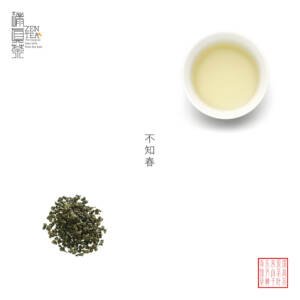

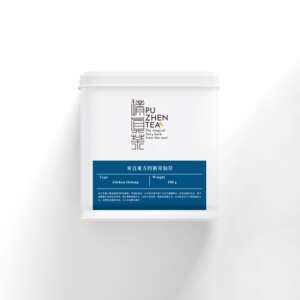
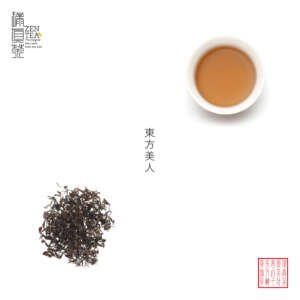


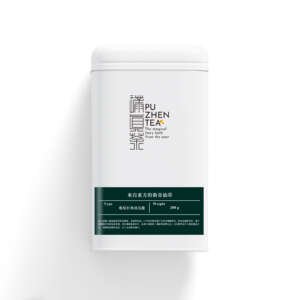

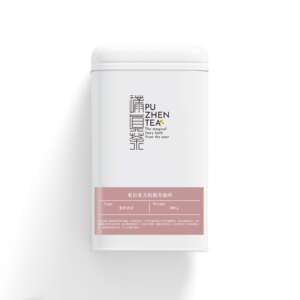

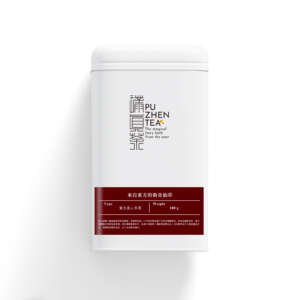
Reviews
There are no reviews yet.